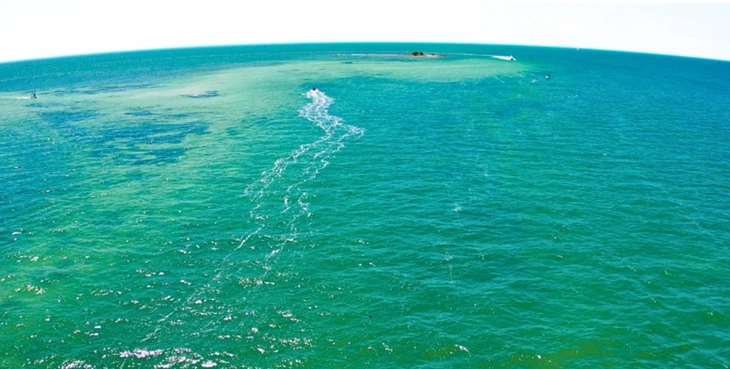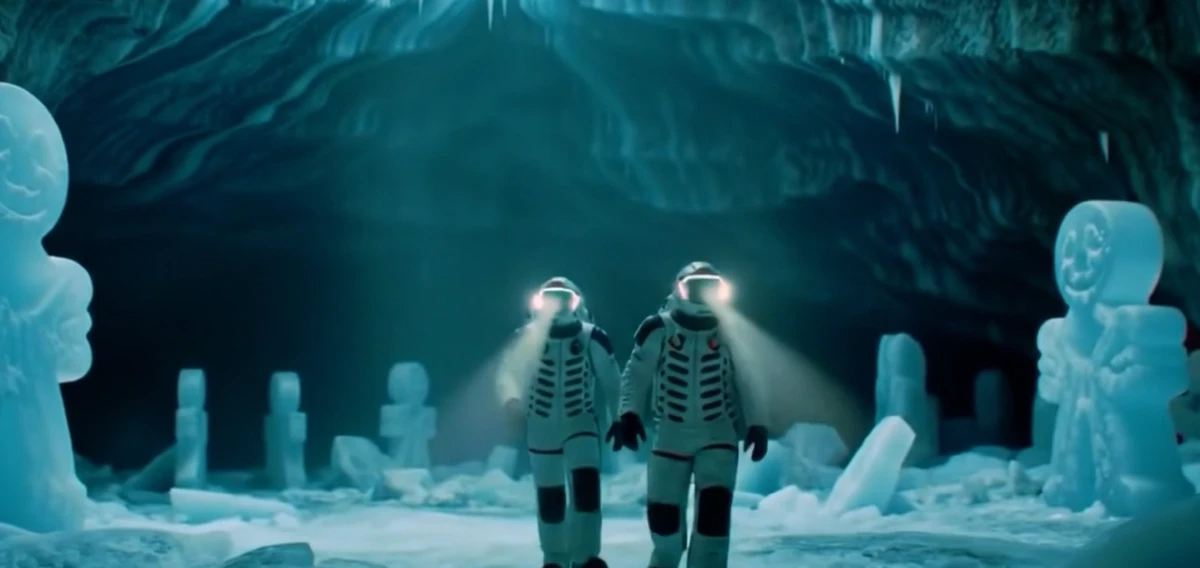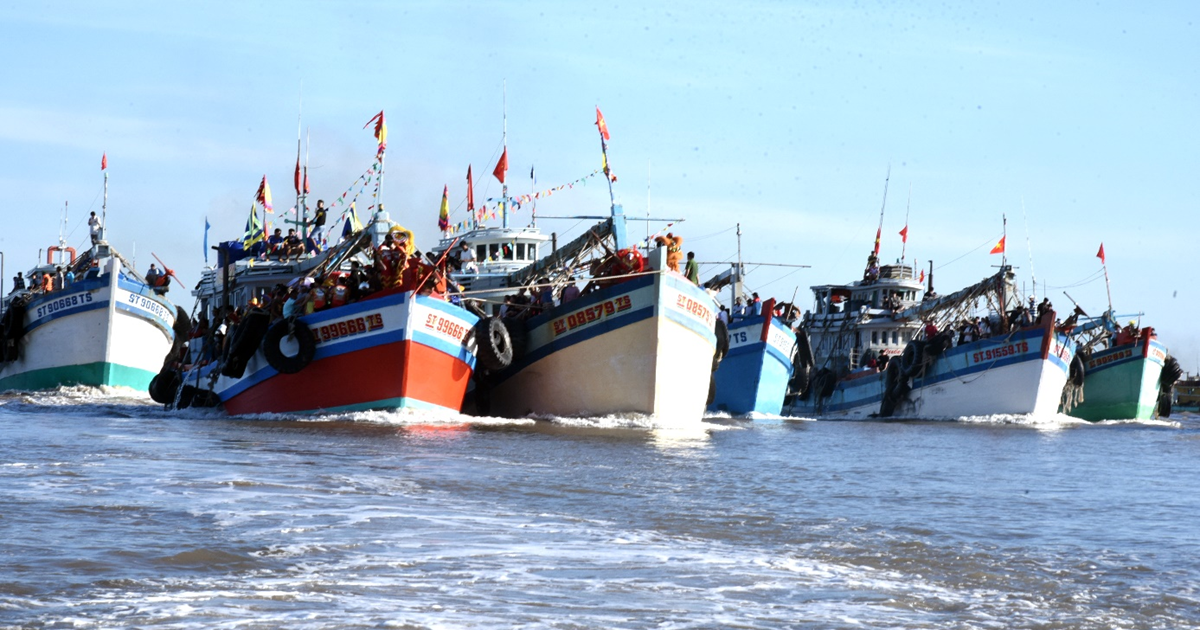
Illustration of the ocean in green - Photo: UWMADISON/CANVA
Seen from space, Earth now appears as a pale blue dot because nearly three-quarters of its surface is ocean.
However, according to new research by Japanese scientists, the Earth's oceans were once green, and this color difference is related to the chemistry and evolution of photosynthesis.
The ocean is green
According to ScienceAlert on April 10, the research began with the observation that the waters around the volcanic island of Iwo Jima in Japan were green, related to an oxidized form of iron (III). Blue-green algae thrive in these waters.
During the Archaean period, the ancestors of modern blue-green algae evolved along with other bacteria using iron(II) instead of water as an electron source for photosynthesis. This suggests high levels of iron in the oceans.
The Archean, 4 to 2.5 billion years ago, was a period when Earth's atmosphere and oceans were devoid of gaseous oxygen. It was also during this period that the first organisms to produce energy from sunlight evolved. These organisms were anaerobic, meaning they could photosynthesize without oxygen.
This creates important changes because the byproduct of anaerobic photosynthesis is oxygen. Oxygen only exists as a gas in the atmosphere once the iron in the seawater can no longer neutralize the oxygen.
Photosynthetic organisms use pigments (mainly chlorophyll) in their cells to convert CO2 into sugar using the energy of the Sun. Blue-green algae are unique because they carry the common pigment chlorophyll, but also have a second pigment called phycoerythrobilin (PEB). The team found that modern blue-green algae genetically modified with PEB grow better in green water.
Before the advent of photosynthesis and oxygen, Earth's oceans contained iron in an oxygen-depleted state. Later, oxygen was released when photosynthesis increased during the Archean, leading to the oxidation of iron in ocean water.
Computer simulations in the study also found that oxygen released during early photosynthesis led to high enough concentrations of oxidized iron particles to turn the sea surface green.
Once all the iron in the ocean has been oxidized, free oxygen (O 2 ) will remain in both the ocean and the atmosphere. The team suggests that worlds that look like pale green dots seen from space may be good candidates for harboring early photosynthetic life.
The chemical changes in the oceans occurred gradually over the Archean, which spanned 1.5 billion years, more than half of Earth's history. By comparison, the entire history of the development and evolution of complex life on our planet covers only about one-eighth of Earth's history.
It is therefore almost certain that ocean colour changed gradually over this period and was likely to have fluctuated. This may explain why blue-green algae evolved both forms of photosynthetic pigment: chlorophyll, which is good in today's white light environment, and PEB, which is good in green light environments.
Can the ocean change color again?
The lesson from this study is that ocean color is related to water chemistry and the impact of life. We can imagine other ocean colors without borrowing too much from science fiction.
Earth could have had purple oceans if sulphur levels were high. This would have involved intense volcanic activity and low atmospheric oxygen levels, which would have led to the proliferation of purple sulphur bacteria.
The ocean can also turn red if tropical climate conditions are harsh, red oxidized iron forms from the decomposition of rocks on land and is carried to the ocean by wind or rivers. Or if a type of algae associated with a "red tide" thrives and dominates the ocean's surface.
As our Sun ages, it will first become brighter, leading to increased surface evaporation and intense UV rays. This creates favorable conditions for purple sulphur bacteria to thrive in deep, oxygen-depleted waters.
This would result in more purple, brown or green in stratified areas in the ocean or near shore and less dark blue due to reduced phytoplankton.
On the geological time scale, nothing is permanent. Therefore, changes in ocean color are inevitable.
The study was published in the journal Nature.
Source: https://tuoitre.vn/dai-duong-tren-trai-dat-tung-co-mau-khac-va-se-con-doi-mau-20250411113825899.htm






![[UPDATE] April 30th parade rehearsal on Le Duan street in front of Independence Palace](https://vstatic.vietnam.vn/vietnam/resource/IMAGE/2025/4/18/8f2604c6bc5648d4b918bd6867d08396)
![[Photo] Prime Minister Pham Minh Chinh receives Mr. Jefferey Perlman, CEO of Warburg Pincus Group (USA)](https://vstatic.vietnam.vn/vietnam/resource/IMAGE/2025/4/18/c37781eeb50342f09d8fe6841db2426c)















































































Comment (0)